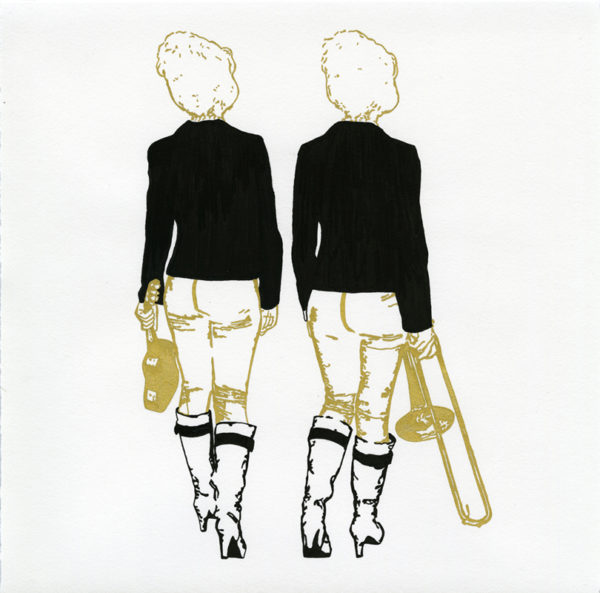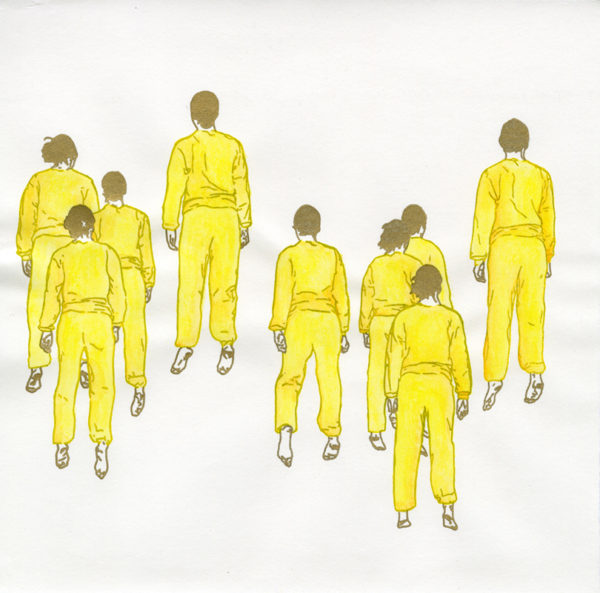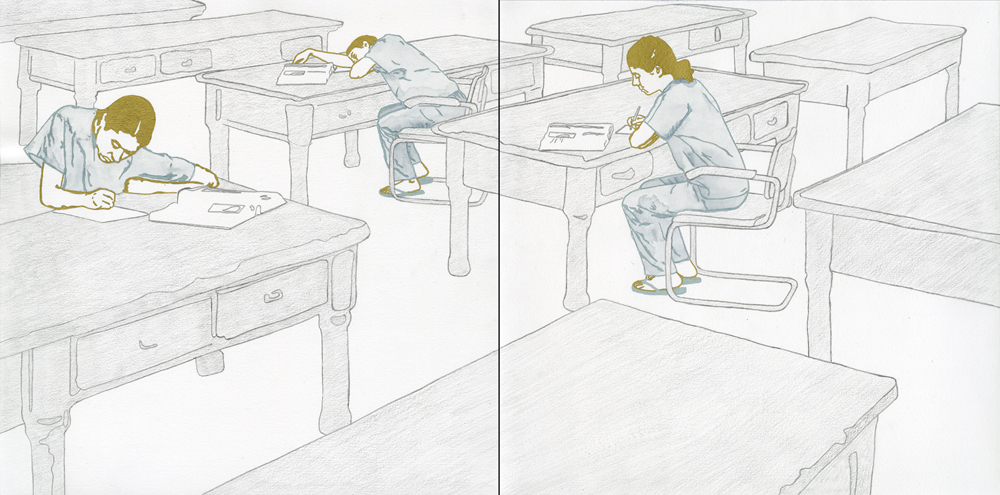Ellen Mueller collaborated with artist Morgan Cahn to create Toned Down/Tuned Up, a collaborative exhibit on view now at Arts Monongahela, 201 High Street, thru June 30. She shares with Zackquill about working in interdisciplinary art, how the exhibit came together, the potential of Morgantown to become an arts center and much more…
Z: How did you end up in West Virginia?
E: I came to WV for a teaching position at the Art Department at West Virginia Wesleyan College. I’ve been there for five years. In a bittersweet turn of events, I’m moving on to a new teaching position this fall at UMass Dartmouth.
Z: How did you come to be an artist?
E: I attended a lot of after-school art classes as a kid, and then my interest tapered off in middle school and high school while I focused on sports and other extracurricular activities. When I went to undergrad, I returned to the arts via visual art, theatre, and design technology, and have continued to work in an interdisciplinary fashion ever since.

Z: How did this exhibition come about? Why is this important for the Morgantown community?
E: Here’s the exhibit statement:
Morgan Cahn and Ellen Mueller met at a one-month artist residency at Vermont Studio Center in May 2011. Over the years, they have stayed in touch, working on long-distance collaborative projects a number of times.
This exhibition will feature the two-dimensional work of Ellen Mueller and Morgan Cahn. Mueller’s work, “Erma Series,” focuses on unsettling themes of corporate management structures, cult dynamics, and Sisyphean tasks. While the drawings have specific personal meaning and a dry sense of humor from the artist’s point of view, viewers are invited to invent their own explanations of what the works mean.
Cahn’s work “Modern Naturalis” is about looking at the world with wonder. Inspired by the Do- It-Yourself attitude that was rampant among early female naturalists, she hacks a webcam into a microscope to explore her surroundings. These D.I.Y forays into the microcosmic manifest as this series of collages which aim to encourage engagement with the natural world from a different perspective.
While these works are conceptually quite different, they both pull from similar color schemes, creating an interesting formal link between the otherwise disparate series.
This work is important to the Morgantown community because it features a West Virginia artist, Mueller, paired with a Washington state artist, Cahn. Through this process of showcasing the network of contemporary artists based in West Virginia, young artists can be inspired to grow their own artistic networks.

Z: How do you think the environment is for the arts in Morgantown? How do you think it could improve?
E: I think there are a lot of opportunities for Morgantown to become an arts center that the rest of the state can cooperate and coordinate with. Living in Buckhannon, I wish there had been even more opportunities for me to come up to Morgantown and show my work. During my five years in the state, I have shown in Morgantown twice, which isn’t bad, but I think we could do even better. Having recently participated in the Tamarack Foundation’s Think Tank, it’s clear that there are a lot of amazing artists scattered throughout the state, and the more we can come together, the better our collective support system will be. Additionally, I think this type of collaboration can help reveal artists working in contemporary practices (video, coding, audio, social practices, etc.) that sometimes get obscured by the rich craft traditions in West Virginia. These are areas of growth, and could help connect WV artists with those elsewhere.
Z: What is your favorite thing about being an artist/creative/curator in Morgantown?
E: My favorite thing about being an artist in West Virginia was working with the natural beauty of the trees and hills. I shot video works in those spaces, and created drawings inspired by those hills. These were works of art that exist specifically because I was here.
Z: Any advice for young artists in the area?
E: I would recommend getting connected to other artists via any opportunity you can. The Tamarack Foundation’s Think Tank was well worth the cost of admission just based on the contacts you walk away with. I would also recommend regularly venturing outside the state via artist residencies and travel. Again, that’s a great way to grow your network and bring valuable knowledge back to WV.
Z: What would people be surprised to know about you?
E: People might be surprised to know that I’m quite introverted despite being a performance artist.
Z: Anything to add?
E: Keep track of my work at http://EllenMueller.com – thanks!
~
Sally Deskins is an artist, writer and curator. She edits the international journal, Les Femmes Folles, and works as Exhibits Coordinator for WVU Libraries.

